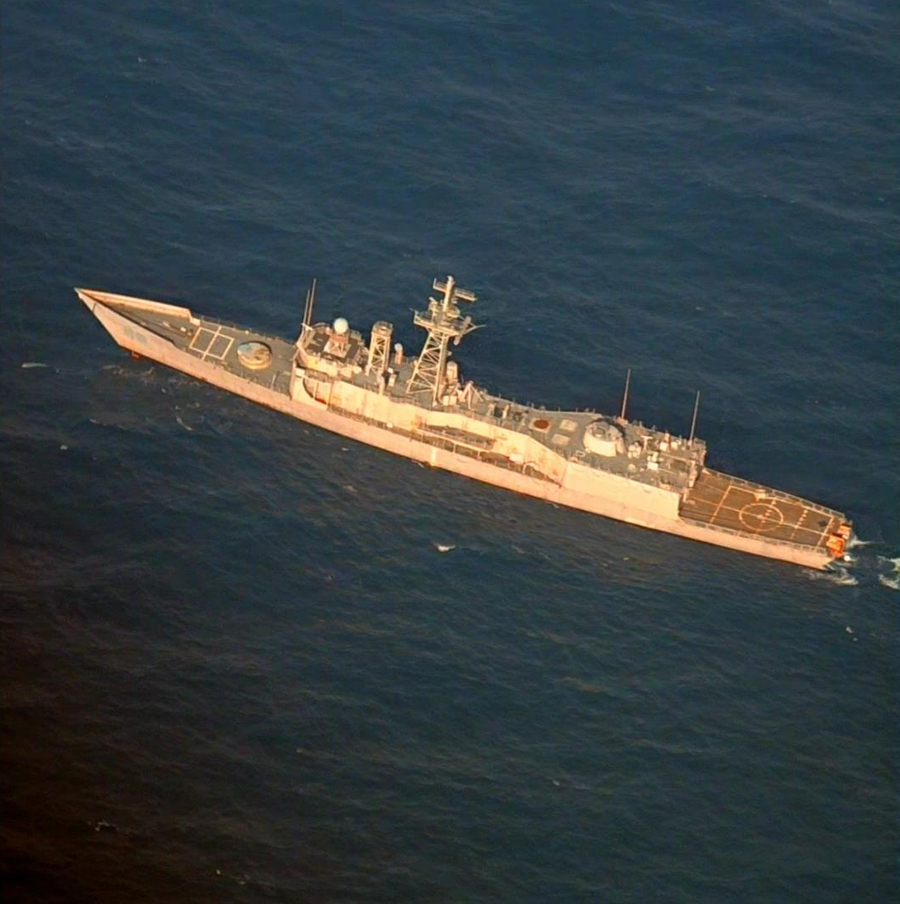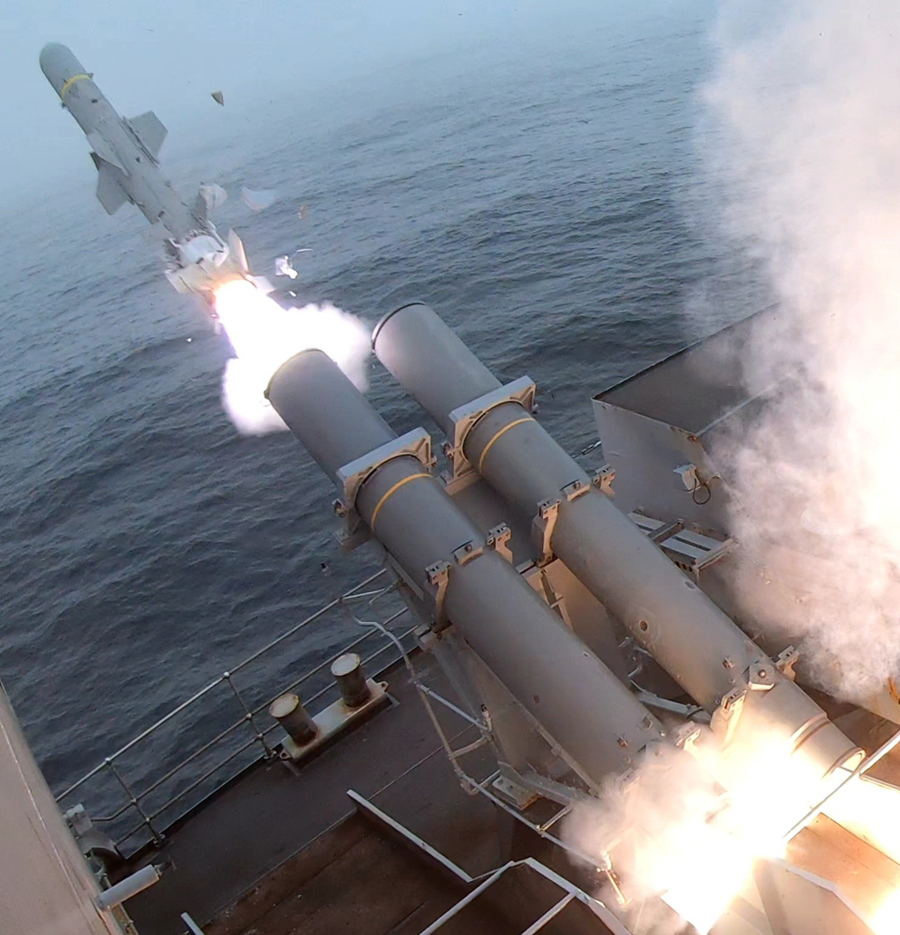Ships and aircraft from the UK and US conducted a long-planned Multi-Area Sinking Exercise (SINKEX) called Atlantic Thunder 22 in the North Atlantic on September 7, 2022.
Atlantic Thunder 22 participants, assigned to US Naval Forces Europe, US Air Forces Europe, UK Royal Navy and UK Royal Air Force, sank the decommissioned guided missile frigate ex-USS Boone, during the SINKEX live fire to develop a combined skill in tactics, targeting and live fire against a surface target at sea.
“Sinking drills not only provide excellent opportunities to gain real-world operational experience in long-range maritime strikes, but also demonstrate the collective might of our combined forces,” said Rear Admiral Oliver “Ollie” Lewis. , US Naval Forces Europe-Africa’s (NAVEUR- NAVAF) Director of Maritime Operations. “Most importantly, gaining a real mastery of the tactics, techniques and procedures we have developed and tested alongside our British allies not only validates our weapons systems, but ultimately contributes to the readiness of the NATO alliance. .”
The exercise was not only a unique and valuable opportunity to hone and prove partner capabilities, but also an exercise of many ‘firsts’.
The ex-Boone was hit by Martlet air-to-surface missiles from Wildcat helicopters assigned to the Type 23 frigate HMS Westminster. The helicopters provided the inaugural laser targeting of British Royal Air Force fixed-wing Typhoons using Paveway IV precision-guided munitions.
A US Navy P-8 Poseidon maritime patrol aircraft assigned to Patrol Squadron 46 fired a long-range anti-ship missile. US Air Force F-15E Eagles, assigned to the 494th Fighter Squadron, dropped maritime strike joint direct attack munitions.
Finally at sea, the US Navy Arleigh Burke guided-missile destroyer USS Arleigh Burke (DDG 51) struck ex-Boone with a Standard Missile 6 (SM-6), the first SM-6 anti-shipping engagement in the US European Command. area of responsibility, while HMS Westminster fired the first salvo of RGM-84D Harpoon missiles from the UK since 2004.
Also aboard Arleigh Burke, Marines assigned to the 22nd Marine Expeditionary Unit provided vital imagery and battle damage assessment by deploying a V-BAT 128 vertical take-off and landing (VTOL) unmanned aerial vehicle (UAV ), marking the first launch of a V-BAT 128 from an Arleigh Burke guided-missile destroyer.
“Ex Atlantic Thunder demonstrated that UK and US naval and air forces can integrate to provide an end-to-end kill chain against a long-range maritime target,” said Cmdr. . Ed Moss-Ward, Commanding Officer of HMS Westminster. “The integration of high-end weapons, sensors and communications with our NATO allies is essential to the Alliance’s collective combat capability demonstrated by the sinking exercise. The firings supported the development of the Royal Navy’s targeting and weaponry capabilities, and enabled the conduct of realistic training to validate tactics and operating procedures.

Ex-US Navy vessels used in SINKEX, known as Hulks, are prepared in strict accordance with regulations prescribed and enforced by the Environmental Protection Agency under a general permit the Navy holds under the Marine Protection, Research and Sanctuaries Act.
Before being transported to participate in a sinking exercise, each vessel undergoes a rigorous cleaning process for environmental safety. In line with UK Ministry of Defense environmental policy, rigorous monitoring has been carried out above and below the sea surface with trained personnel using specialist equipment to reduce the overall risk of inadvertent impact on the marine environment and marine mammals during the SINKEX.
Ex-Boone is a decommissioned guided missile frigate, which entered the United States Naval Service on May 15, 1982. She was decommissioned on February 23, 2012. The 20th ship of the Oliver Hazard Perry class, it was the first ship named for Vice Admiral Joel Thompson Boone, Medal of Honor recipient and the most decorated doctor of the First World War.

